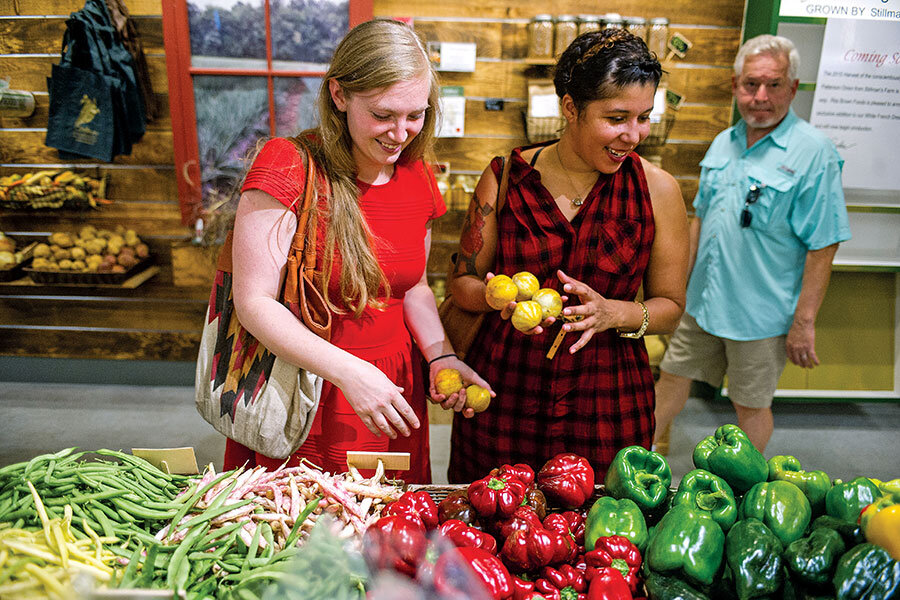Local food popularity grows further – but what’s ‘local’?
Loading...
When Joanne Morton and Lydia Shaw came across the Boston Public Market, which features only New England vendors, they knew they had to stop in. The women, visiting from southeastern Connecticut, always try to buy local. “We always try to support our local farmers and merchants,” says Ms. Shaw. “We’re not into big companies,” adds Ms. Morton, a financial planner.
They aren’t alone. A significant number of Americans continue to be intrigued by “local” food and to purchase it, according to recent surveys from the International Food Information Council Foundation, the Pew Research Center, and British polling firm Ipsos. But what does it mean to shop local? For some, local remains a matter of geography. For others, it is about supporting their local economy or a more sustainable food system. And for still others, it is about knowing where their food comes from and how it is made, even if it is coffee shipped from a Costa Rican cooperative. In 2008, Congress passed a bill that gave money to local food initiatives. According to the Food, Conservation, and Energy Act, the total distance a product can travel while still being considered local is less than 400 miles.
But Lydia Zepeda, a consumer science professor at the University of Wisconsin-Madison, has found the largest consensus for what is local to be any product that comes from within an hour’s drive. But is that with or without traffic? she asks. What if it crosses state lines? adds John Hayes, a food science professor and director of the Sensory Evaluation Center at Pennsylvania State University. A consumer might like the idea of contributing to a revitalized downtown, he says. Or maybe it’s as straightforward as local tasting better. It is for Kaitlin Bohon, a 20-something from Somerville, Mass. “I taste a difference,” she says at the Boston Public Market. For Ms. Bohon, buying local is both about supporting New England business and knowing who grew and handled her food.







